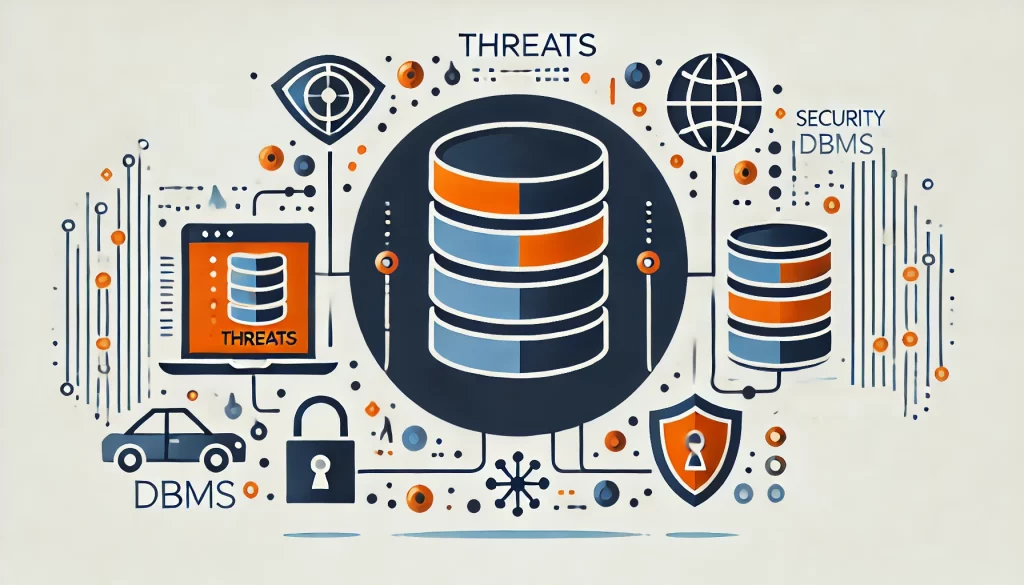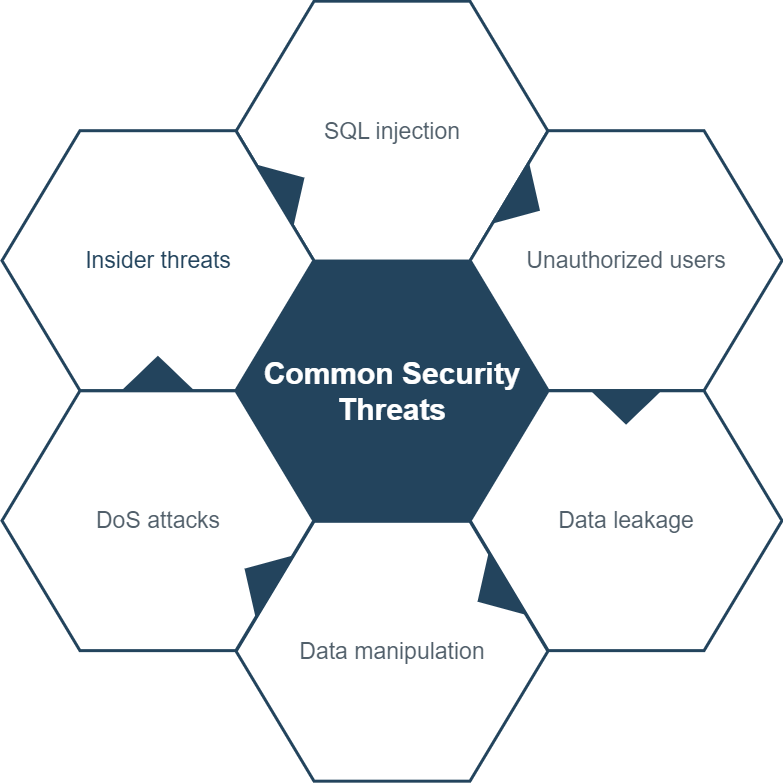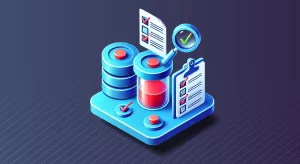
Protecting Data in DBMS: A Deep Dive into Common Threats and Solutions

Introduction
In today’s digital landscape, sensitive data is one of the most valuable assets for any organization. Database Management Systems (DBMS) play a crucial role in storing, organizing, and managing this sensitive data. As data gets more important, the threats in DBMS increase, making data breaches and server security compromises more likely.
Keeping sensitive data in databases secure is important to protect information and maintain user trust. This article will discuss the basics of DBMS. Also covered will be security threats like DoS attacks and SQL injection attacks.
Additionally, it will provide examples of potential threat scenarios. By understanding these threats, organizations can take proactive measures to safeguard their database servers and prevent data breaches.
What is DBMS?
A Database Management System (DBMS) is software that helps users create, manage, and use database servers. It helps users interact with the database server to store, retrieve, and manage important data efficiently. Notable Database Management Systems (DBMS) encompass MySQL, Oracle, Microsoft SQL Server, and PostgreSQL.
While DBMS offer numerous benefits, they also introduce potential security vulnerabilities. Data breaches in DBMS can compromise the confidentiality, integrity, and availability of sensitive data. These threats can originate from various sources, including malicious actors like unauthorized users, system glitches, and human errors.
Common Security Threats in DBMS

- SQL Injection Attacks
- Unauthorized Users
- Data Leakage
- Data Manipulation
- Denial of Service (DoS) Attacks
- Insider Threats
- Insecure Configuration
SQL injection is one of the most prevalent threats to database servers. SQL injection happens when someone adds harmful SQL commands to application requests. This allows them to control the database and gain unauthorized access. SQL injection attacks can lead to data breaches, data theft, modification, or deletion of sensitive data.
Unauthorized users gaining access occurs when an individual gains access to a database server without proper authorization. This can happen because of weak passwords, stolen login information, or exploiting system vulnerabilities. These issues can result in data leaks.
Data leakage refers to the unauthorized disclosure of sensitive data from a database server. Data breaches can happen in different ways. One way occurs when sending data without security measures. Another way occurs when weak access controls accidentally expose data.
Data manipulation involves the unauthorized modification of sensitive data within a database server. Attackers can exploit vulnerabilities to alter, delete, or corrupt data, compromising its integrity and reliability, and potentially causing data breaches.
DoS attacks try to disrupt a database server by sending too many requests. They can also exploit vulnerabilities in the system to cause it to crash. This DoS attack can stop real users from getting to the database server and its important data.
Threats can be intentional or unintentional. An intentional threat is when an employee steals data. An unintentional threat is when an employee falls for a phishing scam. Both types of threats can result in data breaches.
Insecure configuration refers to the inadequate or improper configuration of database management software and database servers, leaving them vulnerable to attacks. Misconfigurations can include default passwords, unnecessary services, and unpatched software, increasing the risk of data breaches.
Security Threats in DBMS Example Scenarios
- SQL Injection Attack Scenario
- Unauthorized User Access Scenario
- Data Leakage Scenario
- Data Manipulation Scenario
- Denial of Service (DoS) Attack Scenario
- Insider Threat Scenario
- Insecure Configuration Scenario
An attacker discovers a vulnerability in a web application that allows them to inject malicious SQL statements. They create a specially designed input that the application does not properly sanitize. When the application uses the input in an SQL query, it executes the attacker’s code. This allows them to access sensitive data in the database server without permission.
An unhappy ex-employee of a company still had access to their old login information after leaving. They used this to get into the company’s database without permission. They steal sensitive customer information and confidential business data before anyone detects their actions.
An employee mistakenly sent an email with sensitive data from the database server to an outside party. The person who shouldn’t see it now has the sensitive information, which could cause a data breach.
A hacker exploits a vulnerability in a database server to gain access and modify sensitive financial records. They alter transaction amounts and account balances, causing discrepancies in the company’s financial statements. The manipulated data leads to incorrect business decisions and financial losses.
A competitor launches a DoS attack against an e-commerce website’s database server during a major sales event. The attacker floods the server with a massive number of requests, overwhelming its resources. The database server becomes unresponsive, preventing legitimate customers from accessing the website and making purchases, resulting in significant financial losses for the company.
A disgruntled employee with legitimate access to the database server decides to sell sensitive customer information to a competitor. They gradually exfiltrate small amounts of data over time to avoid detection. Customers discover the data breach months later when they start reporting instances of identity theft.
An organization fails to change the default administrator credentials on their newly installed database server. An attacker discovers the default credentials and gains unrestricted access to the database. The attacker proceeds to steal sensitive data, modify database configurations, and plant malware on the server.
Conclusion
Threats to database servers in DBMS pose significant risks to organizations, compromising the security and integrity of sensitive data. Data breaches, SQL injection attacks, unauthorized users, denial of service (DoS) attacks, and other threats can have severe consequences.
Organizations can protect their database servers and prevent data breaches by knowing different security threats and taking proactive measures. To keep database servers safe in DBMS, you need strong security measures. Updating software regularly is also crucial. Additionally, educating employees on cybersecurity practices is important.
Monitoring database server activity can prevent unauthorized access and data breaches. You can do this by using access controls, security solutions, and best practices for database security. These measures help protect sensitive data. To protect data and maintain user trust, organizations should secure their database servers and stay vigilant for new threats.
